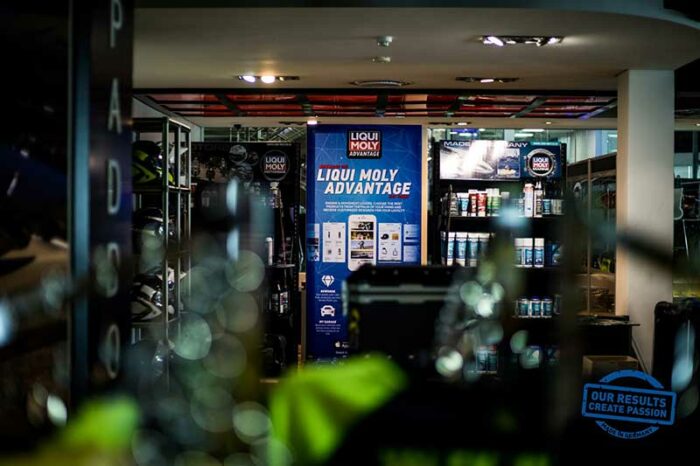
Maybe it’s just me, but I am endlessly curious. I have used a number of Liqui Moly products and consistently found them to be absolutely excellent. I was intrigued to find out more about Liqui Moly the company.
Their story goes back to a post-war occupied Germany. It was difficult to stock the shelves of a General Dealer store in the war-devastated country. You would try and sell whatever you could lay your hands on. The American army sold cans of an oil additive, called Liqui Moly, which contained Molybdenum Disulfide. They say that necessity is the mother of invention, and so it was with Molybdenum Disulfide.

Let’s go back to the First World War and specifically aerial combat. Aircraft were in their infancy, but it didn’t take long for the military to see their potential in a combat role. Aircraft were soon adapted from pilots flying around taking pot shots at each other with revolvers and dropping hand grenades, to machine guns firing through the propeller (without shooting your own plane down) and proper bomb racks.
Machine gun fire raking your aircraft often resulted in oil tanks or lines being hit and a resulting loss of your vital engine lubrication. A seized engine gave you far fewer options of a suitable crash landing spot. Molybdenum Disulfide came to the rescue. Adding a can to your oil provided enough residual lubrication to keep an oil-less engine running for long enough to give the pilot a fighting chance of landing in one piece. Given the success of the German ace, Mannfred von Richtofen, (the Red Baron) and his Flying Circus, I am sure that Molybdenum Disulfide saved a number of Allied pilots’ lives!
So why is Molybdenum Disulfide so slippery? For those of you boring boys and girls who actually paid attention in your science classes, you will know that Molybdenum Disulfide is what results when you mix one part of Molybdenum with two parts of Sulphur. Doing this results in what scientists call “superlubricity”.

In layman’s terms, the shear strength goes up when the friction is increased, maintaining lubrication. How cool is that? The harder I ride my bike the better it lubricates! Well, sort of…the fact is, it has an almost unparalleled low coefficient of friction. Less friction means more power and extended engine life. It’s a no-brainer really.
So it was then, that back in 1957, in a town called Ulm, on the banks of the Danube river, Liqui Moly the company was formed. The rest, as they say, is history. Today, Liqui Moly sells a range of around 4,000 products in more than 150 countries.
Lubricants form the core of the business, but as you will know from our product posts, they have an amazing range of superb products. Liqui Moly allows you to maintain your bike and riding kit both inside and out, as well as keep pesky rats away from it! It doesn’t get much better than that.
Liqui Moly has a long history in motorsport in Europe, the USA, the Middle East and Asia. Since 2015 Liqui Moly has been the sole lubricant sponsor in Moto2 and Moto3. Formula 1 signed a three-year deal in 2020. If these entities are happy to put their faith in Liqui Moly then count me in too!

For more information on Liqui Moly’s product range, click HERE.





